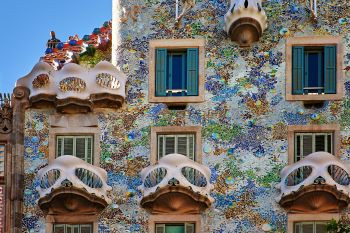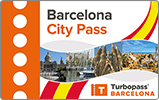





Strolling through the popular Passeig de Gràcia makes the hearts of all architecture lovers beat faster. Passeig de Gràcia is practically unique in the world: there are two buildings on the same street that have been declared a UNESCO World Heritage Site and were designed by the same architect, Antoni Gaudí. We are talking about Casa Batlló and Casa Milà.
Casa Batlló at 43 Passeig de Gràcia is an outstanding example of Gaudí's innovative architecture and has been a UNESCO World Heritage Site since 2005. Gaudí combined stone, glass, ceramics and iron to create a unique façade that creates a poetic interplay of light and shadow in the sunlight. The ‘trencadís’ technique, which adorns both the façade and the interior and was personally supervised by Gaudí, is particularly noteworthy.
At the beginning of the 20th century, the industrialist Josep Batlló bought a building constructed in 1877 and commissioned Gaudí to renovate it in 1904. Gaudí decided to preserve the original structure and design it creatively instead of building from scratch. He personally designed and supervised the renovation work, including the famous trencadís and ceramic panels.
In addition to its architectural brilliance, Casa Batlló is also characterised by sustainable technologies that save energy and water, such as rainwater harvesting and solar energy. The building is thus an example of a successful combination of beauty and environmental awareness.

Clickhere
to see on google maps
Address:
Passeig de Gràcia 43
08007 Barcelona
Book your Barcelona City Pass now and get free entry to Casa Batlló!
Free admission to Barcelona's museums, attractions, and tours. Free travel on public transport and discounts included.

incl. VAT and service fees, excl. shipping fees